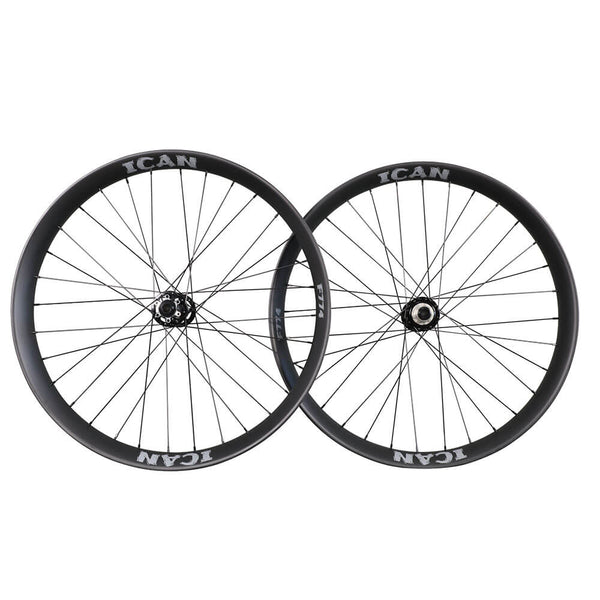How to choose the best fat bike tire for your fat bike? This article will guide you on which factors we should consider. Over the last few years, the fat bike has gained much popularity, and people don’t use the bike only for winter riding anymore.
This big-wheeled bike has become a fan’s favorite for summer rides, too; a big-tire bike is no longer a rare sight on the trails. As the bike gets ridden all year round, tire choice is important to the driving experience.
What is the fat bike tire
A fat bike tire is much wider than a regular MTB tire. A normal tire has a width between 2.0 and 2.6 inches, whereas a fat tire is much larger, usually between 4 and 5 inches wide. The bike still uses a 26-inch wheel to seat these enormous tires. Also, the width of those rims is much wider, going from 75 to 100mm instead of 20 to 40mm on regular tires, but due to the volume of the tire, it feels like you're riding a proper 29-inch bike. When comparing a fat tire and a 29-inch tire, you'll notice that the outside diameter will be larger than the regular wheel.
To get the best experience from your fat tire, you'd want to set it up on a very low tire pressure, between 5 and 15 psi. This way, you can get maximum grip and still have this floaty feeling on the bike. This big air cushion allows you to plow through snow or sand without problems. It gives great damping; it takes away a lot of chatter you'll come across on the trails, like roots, rocks, and small bumps. If your tire is pumped too hard, you'll lose all the driving characteristics of a fat bike, but a tire that's too soft will have a lot of sidewall flex. It's up to you to determine what tire pressure is ideal on your local trails.
Fat tire vs. plus tire
The clearance is one of the most important things to check when choosing a tire for your fat bike. You must determine if your bike can handle the chosen tire size and wheelset.
Nowadays, it’s common to have an extra set of wheels for your fat tire cycle as it’s used all year round. People tend to have a wheelset for summer and winter riding. There are a couple of options to choose from:-
26 inch wheelset with a fat tire
-
27.5 inch wheelset with a fat tire
-
27.5 inch wheelset with a plus tire
-
29 inch wheelset with a plus tire
The 26-inch wheelset is what a fat cycle is made for, so you can perfectly switch the tires only between seasons. If you ride tubeless, this is more work-intensive than having two different wheelsets, but it will be the cheapest option.
The tire choices in itself depend on what you need. A large, knobbed tire with a lot of grip for the rougher trails or weather conditions or a better rolling tire with smaller and more spread knobs for summer riding and more loamy trails.
Remember, when you put on a large tire or a larger wheelset, the height of your bottom bracket gets raised. Because as mentioned before, the outside diameter of a 4.0” or even a 4.5” tire will be much larger than a regular 29-inch wheel. Some riders put a 27.5-inch fat wheelset to raise their bikes even higher, but doing so will also make your bike feel more sluggish. Because of the bigger tires, you’ll have to work harder in those turns.
Then there’s also the option of a 27.5-inch or 29-inch wheelset with a plus tire. Although the latter is not commonly seen on a fat bike. To be clear, a plus tire is between 2.8 and 3.2 inches wide.
The use of a plus tire on a big tire bike makes the bike more responsive than the fat wheels due to the weight difference between both wheelsets. Although you’ll be losing some of the damping abilities of your fat tire, your bike will certainly gain more acceleration coming out of those slow corners.
Wheelset choice
The first decision is all about wheel size. The most common choices are a 26-inch or a 27.5-inch wheelset on fat bikes.
The 26-inch wheelset feels stiffer than a 27.5 simply because the spokes are shorter. And due to the larger clearance, it can accommodate a larger tire on the rim. Also, since it’s smaller, there is less of a weight penalty, but as these wheels are made for fat tires, you’ll have to consider the weight of the chosen tire.
A 27.5-inch or 29-inch wheelset can fit a different tire with less rolling resistance. As mentioned before, there will be more flex on the wheels compared to a 26-inch. But if this is a nuisance for you as a rider, you can always opt for carbon rims.
A carbon rim will give you the necessary stiffness and is much lighter than aluminum wheels, making you more nimble on the bike, less fatigued, and going for longer rides.
27.5er Fat Bike Wheels F774 is ICAN’s new fat bike wheelset launched in 2024, with high quality and durable design.
What choice do you need to make?
To me, your fat bike wheels and tires depend completely on your riding style and living conditions. If you use your bike to commute every day, my weapon of choice would be a 27.5 plus wheelset, but if you use your big burly bike to shred through rough terrain, I will choose a 26-inch wheel with a nice fat tire on it. I wouldn’t want to lose all the advantages and fun of riding a fat bike on the trails, even if this means I’d have to pedal a bit harder.
If you want to find the best fat bike tire, Choosing a trusted brand is also very important, which means good quality and better service.

